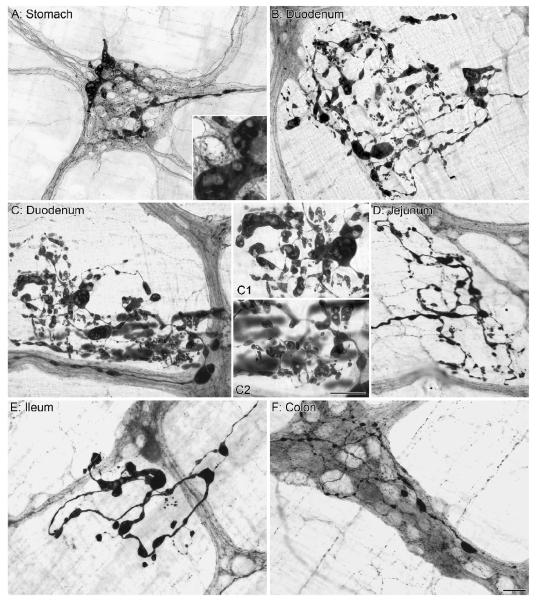Figure 2.
Markedly swollen axons positive for alpha-synuclein were observed in the stomach (A), small intestine (B-E) and large intestine (F) of aged rats. These engorged axonal processes contained ovoid, fusiform, club-shaped, and spherical alpha-synuclein immunoreactive inclusions are similar to descriptions of Lewy bodies in the central and peripheral nervous system of Parkinson’s patients, with the central core of these alpha-synuclein inclusions unstained for alpha-synuclein (Inset in A and panels C1 and C2). Interestingly, in the adult rat, alpha-synuclein processes and terminals are typically confined within the borders of the myenteric ganglia, however complex alpha-synuclein-positive heteroplastic processes were often observed outside of the ganglionic cellular complexes (B-E). Focus stacking was used for the Insert in panel A (2 merged images) and for panel C2 (6 merged images). Scale bar in F = 50 μm for A; 25 μm for B-F. Scale bar in C2 = 25 μm for Inset in A and panels C1 and C2.

